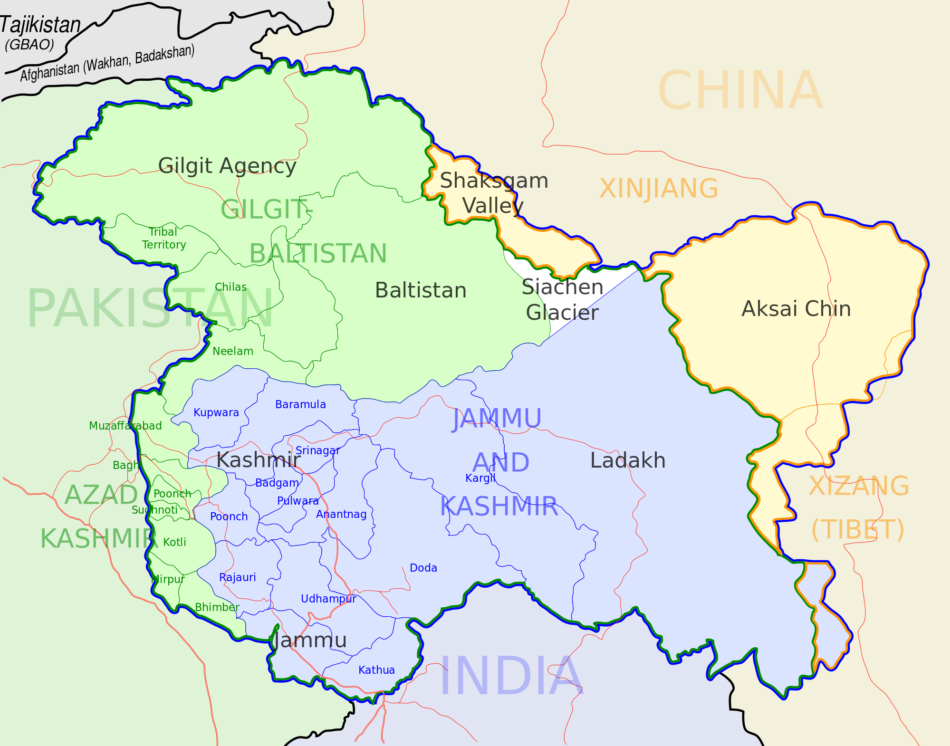Indian Illegally Occupied Jammu & Kashmir is one of the most militarized regions in the world and the area with the highest concentration of security estimated personnel between 500,000 and 700,000 active. Kashmir became an active battleground in 1947 after India’s unilateral violation of its sovereign rights via a full-scale invasion of the territory. This dispute has resulted in hostilities, with both countries claiming different status of the Kashmir valley. The situation has led to heavy deployment of military and paramilitary forces in the region, affecting the day-to-day lives of people calling it their home.
People who raised voices for Kashmiris’ right to self-determination and independence of the country have been engaged in a protracted internal armed war with Indian forces for which gained considerable momentum since past three decades. Independent voices have been further muzzled by the Indian government’s continuous persecution of politicians, journalists, and human rights advocates, the ban on internet services and the dissolution of the state human rights commission have left the people of Kashmir without an effective redress. Human rights violations at such a large scale by the Indian armed forces included extrajudicial executions, enforced disappearances, torture, sexual assault, arbitrary detentions, etc. Since 2019, the Indian government has been using collective punishment against the residents of Kashmir under the pretext of “counterterrorism” efforts. The government’s actions, including a harsh crackdown on peaceful rallies in the valley, notably those recently held by Kashmiri Muslims who were subjected to baton charges and tear gas shells, are now under scrutiny in light of the current spate of civilians being targeted.
Since Prime Minister Narendra Modi assumed PM office in India, he has had thus far most shady record of human rights violations in Indian Illegally Occupied Jammu & Kashmir (IIOJ&K). After 2019 when the Modi government withdrew IIOJ&K’s constitutional autonomy and converted its status from a state of India to a union territory directly under New Delhi’s control, the internet caused blackouts and disruptions there to escalate beyond any other region. Between August 2019 and January 2020, when 2G internet was restored, the area also had the longest internet outage in the world’s so-called largest democracy. The government didn’t resume 4G services for another 18 months. According to Digital Rights Group Access Now, one of the highest rates in the world, at least 418 internet shutdowns affected residents in Jammu and Kashmir since 2012 with 85 shutdowns in 2021 alone. These shutdowns, according to the digital rights organization, were implemented as “counterterrorism” measures. The region’s longest internet shutdown lasted from August 5, 2019, to January 25, 2020: the months after Delhi revoked the region’s status.
Reuters reported that according to digital rights group Access Now, the shutdowns in 2021 cost the economy an estimated $600 million. It is “extremely easy” to suspend the internet in India, as federal and state officers can do so “without any prior judicial authorization”, said Krishnesh Bapat, an associate litigation counsel at the non-profit Internet Freedom Foundation. Al Jazeera wrote that the government is using internet shutdowns as weapons of control and shields of impunity. It added that in 2021, about 80 percent of all shutdowns in India were in the disputed Himalayan region, compared with 58 percent in 2022. Since 2019 the region has witnessed an unprecedented crackdown on residents and the imposition of laws and policies which critics say are aimed at marginalizing and oppressing the country’s only Muslim-majority region. Voice of America reported that according to Top10VPN, a worldwide digital privacy and research organization, the cost of internet outages in India as a whole was expected to be $184.3 million in 2022.
In June 2018, the UN Human Rights Chief released the first-ever report on the human rights situation in both parts of Kashmir, in India and Pakistan which was immediately dismissed by Indian authorities. Similarly, in 2019 Indian authorities declined to communicate with three UN independent experts located in Geneva after they requested information on extrajudicial executions in Kashmir since 1990 and made a reference in their letter to the UN Human Rights High Commissioner’s report.
The frequent and protracted shutdowns seriously impacted people’s quality of life, especially in business, education, and healthcare. Both businesses and students could not access Internet marketplaces or use virtual lectures and services. The Jammu Kashmir Coalition of Civil Society (JKCCS), a prominent human rights organization in its 2020 report, titled “Kashmir’s Internet Siege” revealed that nearly 500,000 youth in Kashmir have lost their jobs due to the “Digital Apartheid” imposed by the Indian authorities since August 2019. The report stated that the ban was introduced to curb mass protests in the region.
Additionally, the UN has acknowledged access to Internet as a fundamental human right under Article 19 of the Universal Declaration of Human Rights (UDHR). The inaccessibility to internet in today’s digital age is discriminatory on a number of levels. By restricting student access to education, a prohibition is most likely to deepen the already existing gap in limited education opportunities available to the youth. The harm that has already been done will take a long time to repair, even if Internet services are expected to be restored in IIOJ&K. It appears to a critical eye that perhaps the Modi government seeks to alienate.
*The writer has an MS in Strategic Studies from Air University Islamabad and currently teaches as visiting faculty at the International Islamic University Islamabad. She writes on South Asian security and strategic issues.
(South Asia Journal)
May 13, 2023
The viewpoints expressed by the authors do not necessarily reflect the opinions, viewpoints and editorial policies of Aequitas Review.


